
We compiled these trends from over 100 brands, comparing year-over-year data for the date range August 1, 2024, to August 31, 2024.
August 2024: Navigating Economic Shifts
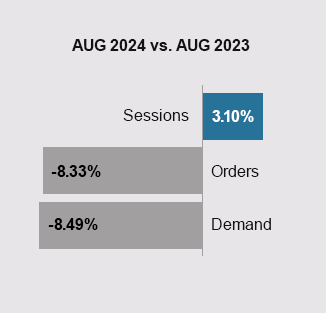
August presented significant challenges for many retailers, as the market landscape continued to evolve. Brands found themselves grappling with intensifying competition, driven by an economic climate that has led to shifting consumer behaviors. Recent economic data highlights a slowdown in consumer spending growth, with inflation cooling but still impacting discretionary purchases.
Many shoppers are now prioritizing value over brand loyalty, leading to a surge in demand for discounts, promotions, and budget-friendly options. McKinsey reports 76% percent of consumers are trading down, changing the type or quantity of purchases for better value and pricing.
With the holiday season approaching, the focus on value-driven offerings will likely intensify. Retailers that can effectively balance promotional strategies with maintaining brand equity will be better positioned to succeed. Monitoring shifts in consumer sentiment and being agile in response to economic fluctuations will be crucial for staying competitive in this rapidly changing market.
August 2024 Marketing Trends
Trend #1: Why Consumers are Embracing Brands like Vera Bradley and J.Crew
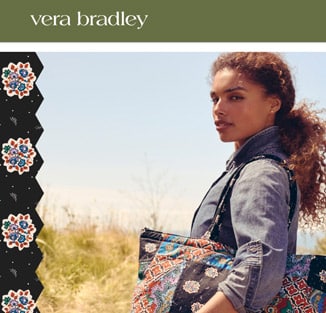
In recent years, nostalgia has become a powerful force in consumer culture, with brands like Vera Bradley and J.Crew riding the wave. Once emblematic of preppy style and functional design, these iconic American brands have tapped into consumers’ emotional connection with their past. Vera Bradley, known for its colorful quilted bags, and J.Crew, once the go-to for classic, timeless fashion, are experiencing a resurgence, thanks in part to the relaunch of their iconic catalogs.
Why Nostalgia Resonates with Consumers
Nostalgia in marketing isn’t new, but it’s more effective than ever in today’s climate. Consumers seek comfort and familiarity in their purchases after the disruption caused by the COVID-19 pandemic and the uncertainty of economic instability. According to the Journal of Consumer Research, nostalgia increases consumer willingness to spend, providing a sense of continuity and stability in uncertain times. Brands that can trigger those emotional responses by revisiting their heritage are well-positioned to win over consumers.
Furthermore, many millennials and Gen X consumers grew up shopping at these brands and now have disposable income. Their yearning for the “good old days” aligns with a renewed interest in the physical shopping experience, which catalogs offer in a tactile, visual format. It’s a way to stand out in the digital age while providing a throwback to a time when shopping felt more personal.
Trend #2: An Iconic Catalog Stirs Consumer Excitement
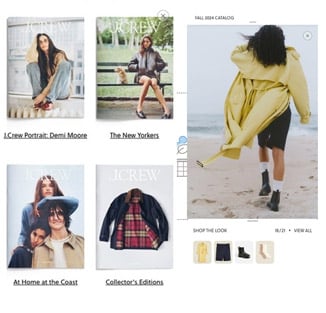
After a nearly 7-year hiatus, one of the most iconic catalogs is back in the mail. J.Crew reintroduced their infamous catalog this month and consumers couldn’t be more excited. The decision to bring it back did not come lightly, but the brand is experiencing a resurgence in sales after filing for bankruptcy in 2020.
J.Crew is keeping its circulation relatively exclusive to loyalty customers while also making it available free in stores or by request. They are also focusing on brand story-telling and editorial content versus product-selling pages. This is not a new trend for catalogers, but to see J.Crew embrace this approach from their photography to layout design to channel execution is exciting.
Not only will the printed copy feature film photography, Demi Moore and their classy merchandise, but the digital experience for customers on the app is very engaging. There are videos and multiple ways to scroll, and it’s easy to click on the thumbnails to shop directly.
J.Crew’s catalog making a comeback should and will signal other retailers to evaluate their marketing strategy to use direct mail to engage with customers.
Read more on WSJ
Trend #3: Postal Retargeting: a Game-Changer for E-commerce Brands
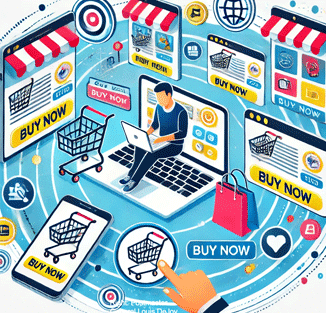
As digital ad fatigue rises, e-commerce brands are turning to postal retargeting—sending personalized direct mail to customers who engaged online but didn’t convert.
How it Works
Data Collection: Brands gather data via cookies, pixel tracking, or CRM, capturing actions like abandoned carts or product views.
Audience Segmentation: Potential customers are segmented based on their online behavior.
Direct Mail Automation: Integrated platforms automate personalized mail sent within days of the online interaction.
Why Postal Retargeting is Effective
High Engagement: Direct mail has a 90% open rate and holds attention longer than digital ads.
Personalized Touch: Tailored offers based on browsing behavior, like a discount for abandoned carts, increase conversion.
Less Competition: With fewer brands using direct mail, it stands out in a crowded digital landscape.
Trend #4: Underconsumption-core, Buy Nothing and Conscious Consumerism
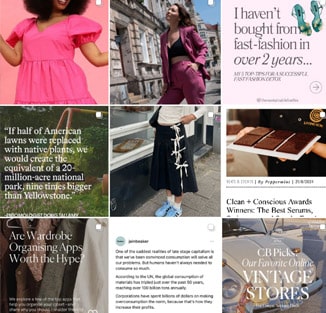
A trend is growing. AdAge credits it to Gen Z due to its popularity on TikTok, but it’s not confined to TikTok alone. Underconsumption-core even earned a mention in Taylor Tomlinson’s After Midnight monologue.
Under consumerism, buy nothing and underconsumption-core are different names for the movement that celebrates minimalism, sustainability, buying less and living small. What does this mean for retailers and marketers? Well, it has all the same hallmarks as “fewer, better things.” It means a focus on quality and longevity. Messages that will resonate, “buy it for life.”
As a frame of reference for the size of the movement, here are Instagram hashtag counts for reference:
#minimalist 17.3M
#minimalism 28.9 M
#minimalstyle 5.1M
#shopmycloset 2.4M
#consciousfashion 1.4M
#consciousconsumer 1M
#consciousconsumerism 152K
#buynothingnew 63k
#underconsumptioncore 3,691
#underconsumption 3,586
Right: Instagram hashtags for #consciousConsumer
Read more: AdAge
Trend #5: Popular meme teaches lesson in design visual hierarchy
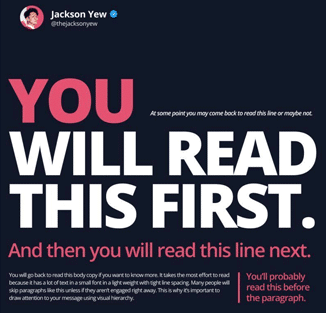
Marketers have long been students of customer behavior and the effect that design decisions have on it. A popular meme is making the rounds again because of its ability to break down the effect of design and message hierarchy on the way that a person process information differently depending on how it’s designed.
This hierarchy mimics real-world user behavior, emphasizing the importance of structuring information visually to ensure that key messages are communicated effectively, even if the reader only glances at the content briefly
The largest text, “YOU WILL READ THIS FIRST,” captures the reader’s attention immediately, making it the primary focus. This ensures that the most important message is conveyed first.
The smallest text at the bottom contains more detailed information. However, because it’s in a lighter weight and smaller font, it requires more effort to read. This mimics how people often interact with content—they focus on larger, more prominent text first, and only if engaged, do they dive deeper into the smaller, more detailed text.
The side note that reads, “You’ll probably read this before the paragraph,” plays on the natural inclination to read smaller chunks of text (like side notes or callouts) before committing to more extended content.
Jump to Section
Marketing KPIs: August 2024 Trends by Industry
Marketing KPIs: August 2024 Trends by Company Revenue
$100M+ | $15M-$100M | $0-$15M
Marketing KPIs: August 2024 Trends by Industry
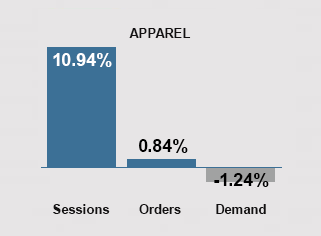
Apparel Industry
• Sessions Increased 10.94%: Consumers remain highly engaged in apparel shopping, with brands effectively driving consistent traffic to their websites.
• Orders Increased 0.84%: While orders are up slightly compared to last August, conversion rates declined slightly.
• Demand Declined -1.24%: The minor drop in overall demand, despite higher session and order volumes, indicates growing price sensitivity. Consumers facing financial constraints are likely to prioritize purchases that offer the most value.
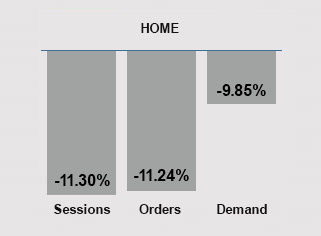
Home Brands
• Sessions Decreased -11.30%: In 2023, many consumers shifted spending away from home goods. This trend has continued into 2024, with inflation affecting both consumer purchasing power and the cost of goods.
• Orders Were Down -11.24%: Though e-commerce remains a key channel for home furnishing sales, the market is evolving. Brick-and-mortar stores remain important, as many consumers still prefer to physically experience furniture before purchasing.
• Demand Decreased -9.85%: Home spending has diminished, with more consumers opting for smaller purchases or delaying large investments in furniture and other home furnishings.
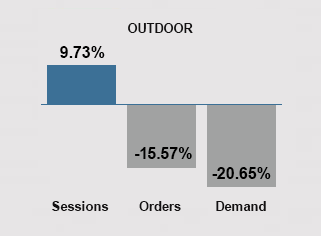
Outdoor Brands
• Sessions Increased 9.73%: Outdoor brands continue to drive traffic to their websites with sessions up YOY.
• Orders Decreased -15.57%: Outdoor brands are facing significant headwinds converting customers with orders down double digits vs. LY.
• Demand Declined -20.65%: Demand significantly dropped compared to last August, impacting both hard goods and soft goods. More consumers are opting for casual and affordable options rather than higher-end, specialized outdoor gear.
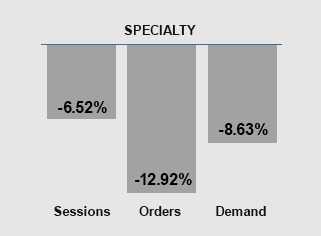
Specialty Retailers
• Sessions Declined -6.52%: A decrease in sessions suggests fewer consumers are looking for specialty products and focusing more on necessities.
• Orders Decreased -12.92%: The decline in orders highlights the challenge of converting consumers and points to a reduction in discretionary spending.
• Demand Decreased -8.63%: Persistent inflation, elevated interest rates, and rising living costs have driven consumers to prioritize essential purchases, leading to reduced demand for specialty retailers.
Marketing KPIs: August 2024 Trends by Company Revenue
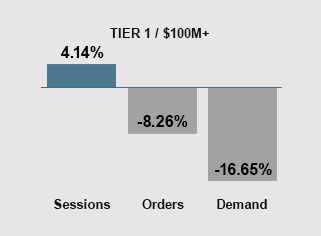
Tier 1 Brands
• Sessions Increased +4.14%: Tier 1 brands experienced modest session growth.
• Orders Decreased -8.26%: The drop in orders, compounded by falling Average Order Values (AOVs), indicates broader challenges in driving conversions. Bundling and cross-selling strategies could enhance AOVs.
• Demand Declined -16.65%: Large declines in demand continue to suggest heavy discounting. Price sensitivity among consumers is driving brands to rely more on promotions.
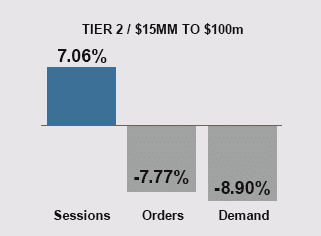
Tier 2 Brands
• Sessions Increased +7.06%: Many Tier 2 brands experienced a rise in session volumes, indicating more robust engagement and customer interest. This uptick may reflect increased marketing efforts or improved site traffic strategies.
• Orders Decreased -7.77%: Despite the rise in sessions, orders declined, signaling a potential disconnect between traffic and conversion rates. This trend aligns with broader industry observations where higher inflation and shifting consumer behavior have impacted discretionary spending.
• Demand Was Down -8.90%: According to recent market reports, demand softening is observed across several sectors, especially in non-essential goods, forcing brands to reassess pricing strategies and promotional effectiveness.
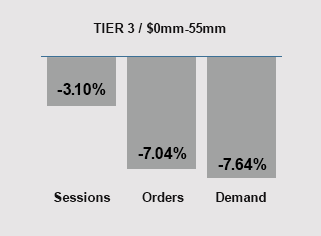
Tier 3 Brands
• Sessions Decreased -3.10%: Tier 3 brands saw fewer sessions than in August 2023, indicating softer engagement.
• Orders Decreased -7.04%: Orders fell from last year, suggesting conversion challenges.
• Demand Declined -7.64%: The decline in demand mirrors broader economic conditions, with consumers prioritizing essential goods over discretionary items.
In the News

Strategies for Managing Higher Postal Rates
Increasing postal rates present a notable challenge for industries that depend on direct mail. However, these higher costs don’t have to mark the end of your direct mail efforts. Michelle Houston shares strategic adjustments for brands to counterbalance the rising rates and still meet their marketing objectives.
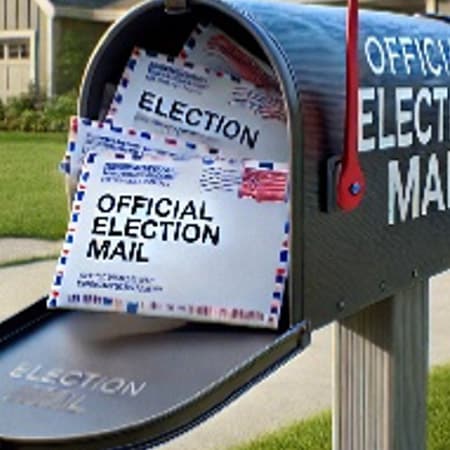
Navigating Election Season: Smart Strategies for Marketing Investments
Election season brings a unique set of challenges and opportunities for marketers. Here’s how to ensure your marketing dollars are well-spent while avoiding potential pitfalls.

Getting Noticed with Direct Mail: Strategies for Success
Proven direct mail campaigns can still capture attention, but standing out requires more than just appearing in someone’s mailbox. This article delves into strategies that enhance engagement and leave a lasting impression with direct mail.
GET IN TOUCH
Questions? Need help integrating online and offline channels?
Tags: August 2024 Marketing Benchmarks, August 2024 Marketing KPIs

